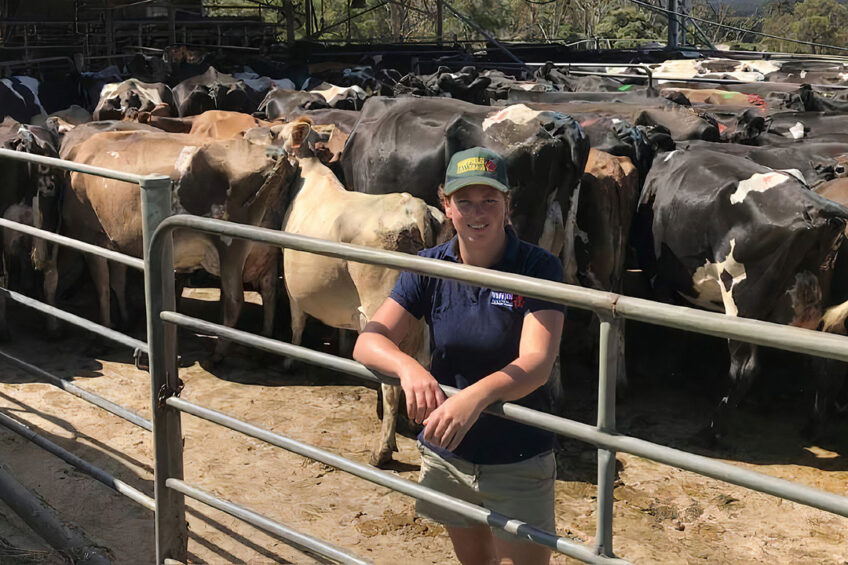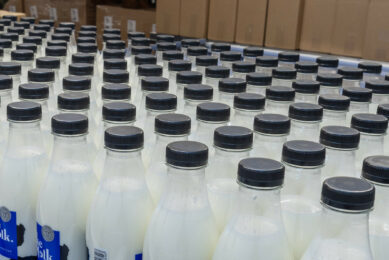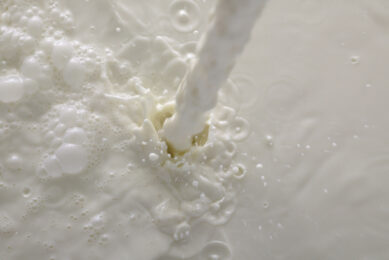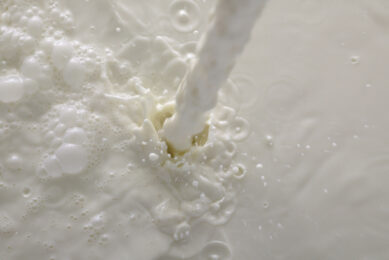“Dairy farmers need to understand their risks”

The Australian dairy industry is facing many challenges including changing consumer trends, increasing government regulations and increased volatility in markets and climate, according to Nuffield scholar and dairy farmer Shannon Notter.
“As dairy farmers we are going to have good years and bad years but in some parts of the country, like the South West of Western Australia, there are real definite trends towards climate change and lower rainfall,” Shannon says. “Dairy farmers need to understand the risks and understand their business, so that they can manage their risks, to be profitable year on year.”
PROFILE
Shannon Notters’ farm has 370 hectares of land, 40 kilometres from the city of Colac, in western Victoria. She owns 500 cows and youngstock. Seasonal calving takes place in July, August and September. “Our cows are dried off for 6 weeks every year,” she explains. “And we aim to grow and consume as much pasture as possible.”
Production: approximately 450 kgs of milk solids per cow per year, influenced by weather and feed availability.
Cows: Smaller framed crossbred cows with an average age of 6 years.
Average rainfall in the region: around 900 millimetres, predominantly winter rain.
Pasture production per hectare: between 6 and 9 tonnes per year.
Price of a kg concentrate (feed): varies with amount of protein in the mix.
Feed per cow per year: around 1 tonne.
Present milk price: AUS$ 6.40 (US$ 4.88) per kg milk solids.
Proceeds minus the feeder costs per kg milk solids: AUS$ 6.40 – AUS$ 4 = AUS$ 2.40 before interest and tax.
Goals for the next 5 to 10 years: “My goal is debt reduction, so I can pay off the farm and pitch for another property at some point.”
Greatest financial or policy-based challenge: “Financially it is all about managing the volatility between milk prices and the cost of feed, fertiliser and labour. I am very happy with my team of three people but I am aware that sourcing labour and the cost of employing people have become a real challenge in Australia.”
Shannon is a dairy farmer from Victoria. She studied agriculture and was a rural bank manager before moving from New Zealand to Australia. “My focus has always been on profitability,” she explains. “And I enjoy helping others and seeing others do well. Trying to encourage people to take on board new ideas is a passion of mine.”

Key research outcomes to drive business growth is low
Shannon travelled across the United States, Czech Republic, the United Kingdom, Ukraine, Kenya, New Zealand, Europe, and South Africa, to visit successful dairy businesses across various operating environments around the world to identify methods and tools that are driving farmer engagement.
Uptake of key research outcomes that would drive business and industry growth is low in Australia.
In her report ‘Lifting farmer engagement within the Australian dairy industry: Encouraging Australian dairy farmers’, the Nuffield scholar points out that the level of farmer engagement and uptake of key research outcomes that would drive business and industry growth is low in Australia.
“There is some great research being done and tools being developed by Dairy Australia but dairy farmers don’t seem to get involved as much as what I saw overseas,” Shannon says. “Partly that is because the cycles of optimism you see within the industry. In Ireland the quotas are off and farmers are allowed to produce more milk. They build on their skills and grow their business. In Australia we have seen a claw back of milk processors and years of drought. There is less optimism.”
Continuous improvement
She encourages farmers to better utilise research and development outcomes. That will create more sustainable businesses and enhance on-farm operations by maximising management potential. “Even in an average year, there’s always going to be top performing farmers that are making a profit,” she says. “The question is: how do we get the rest of the farmers to aim for continuous improvement.”
Some dairy farmers don’t have the drive or are happy in the situation they are in, Shannon says. “They don’t feel the need to change the system they’re currently operating in. Even though their operating environment changes constantly.”
VIDEO: Watch Shannon share the insights she has gained so far
In her report, the Victorian dairy farmer gives the example of Neil Baker from the UK. His business has been able to increase productivity and profitability by focusing on genetics and improvements in scale and process efficiencies.
Aiming to grow the dairy business to run 2,500 head, cows are milked 3 times a day through one 80 bail rotary in a high input, high output system. “With economies of scale he was able to keep growing his business and make good margins,” Shannon says.

Goals and targets
She emphasises that Australian dairy businesses need to place a greater priority on setting clear business goals and targets, including benchmarking business performance. “If you have goals and are looking at everything within the business, including things like lifestyle goals, you know what you want to achieve. That will in turn give you drive and ambition to achieve those goals.”
And populations that get wealthier, demand food with a higher nutrition value and higher protein. Australian agriculture has the option to benefit from this demand in Asia.
The Nuffield scholar sees good opportunities for Australian dairy farmers, like an increasing global demand for dairy products and close proximity to Asia. “There is a growing population and growing demand,” Shannon says. “And populations that get wealthier, demand food with a higher nutrition value and higher protein. Australian agriculture has the option to benefit from this demand in Asia.”
Join 13,000+ subscribers
Subscribe to our newsletter to stay updated about all the need-to-know content in the dairy sector, two times a week.










